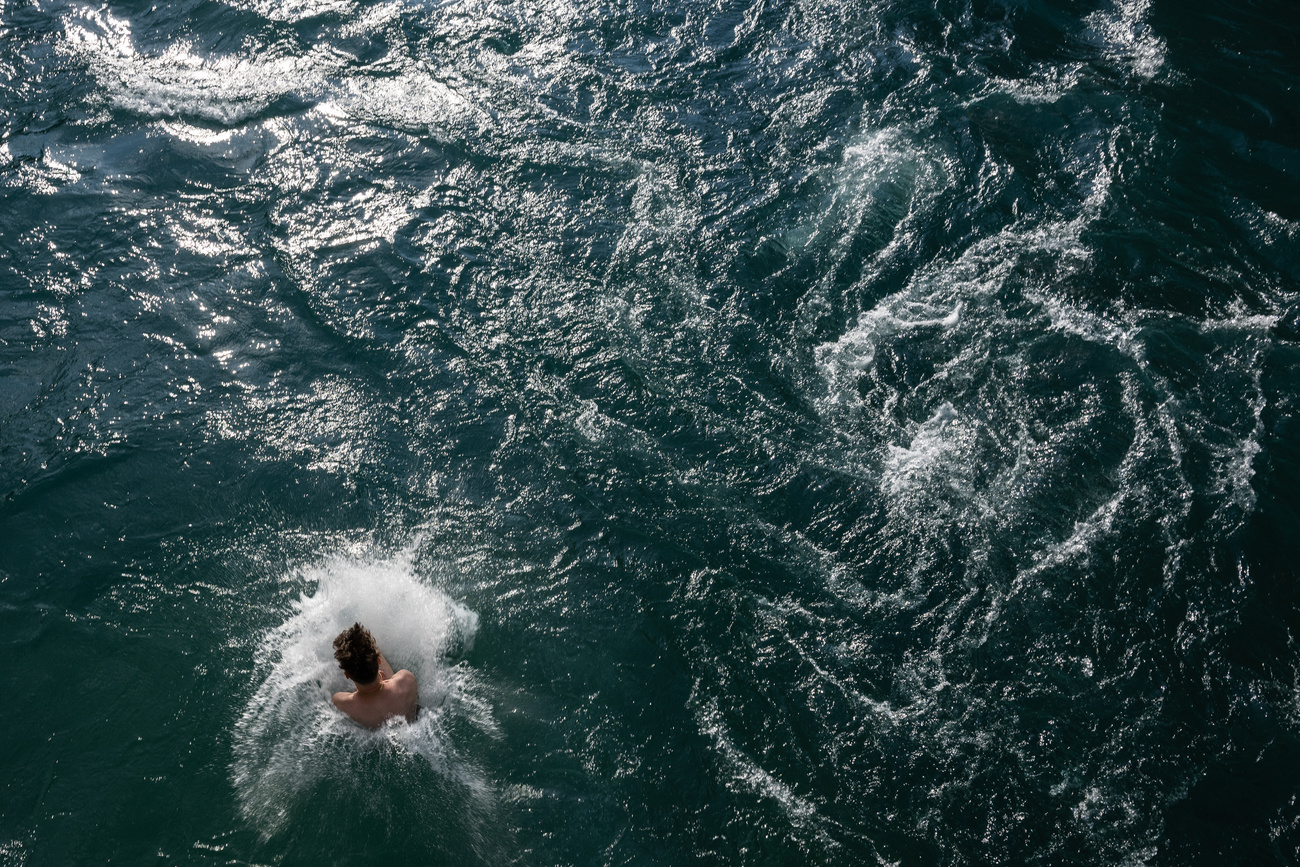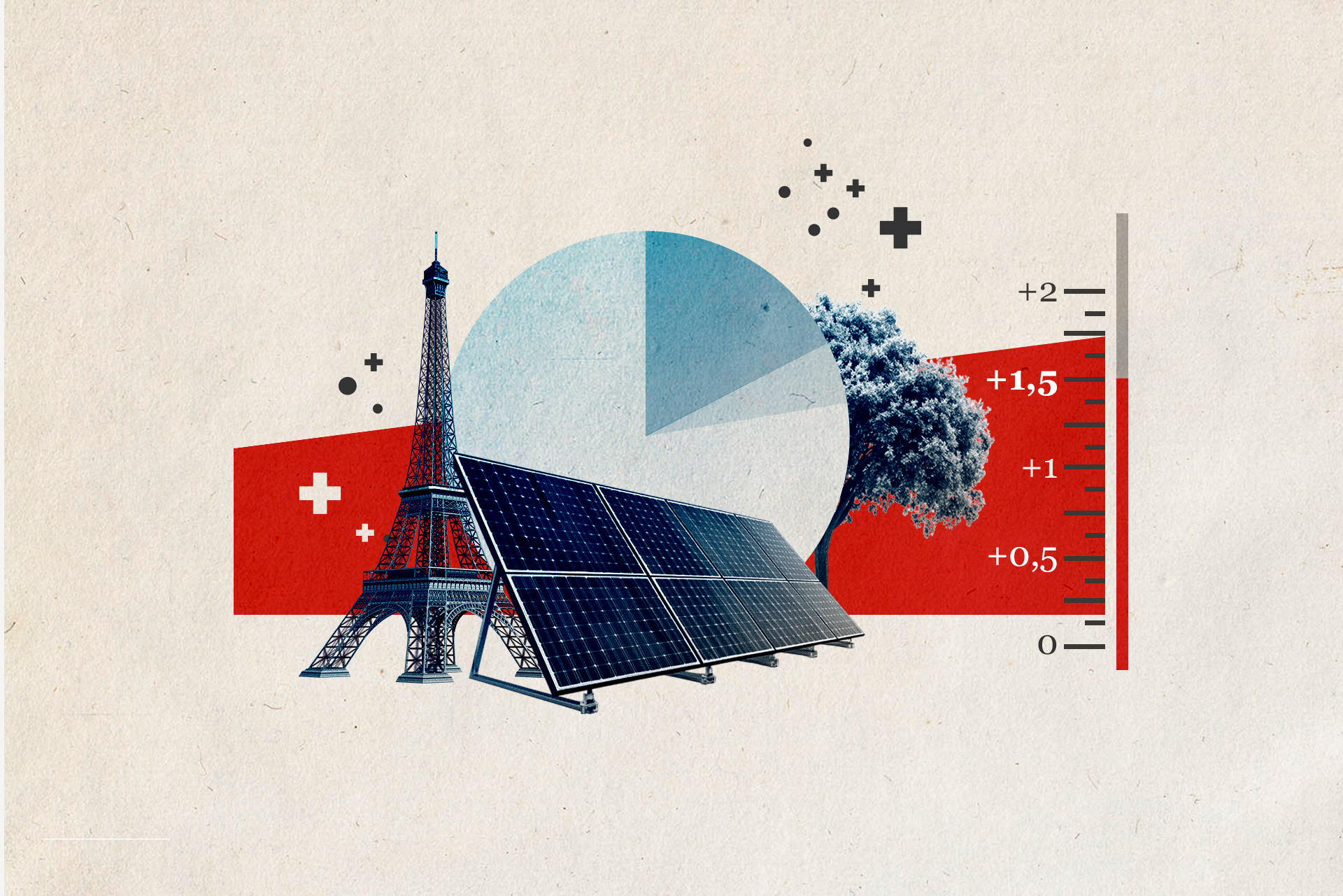
Men at higher risk of drowning in Swiss rivers

The death of Emmeril Mumtadz, the son of a top Indonesian politician who drowned in the river Aare in Bern in May, has sparked international dismay and criticism against river swimming in Switzerland. Mumtadz is one of many people who drown in Swiss rivers and lakes every year.
Reto Abächerli, manager of the Swiss Life Saving Society (SLRG), explains why Switzerland is so liberal when it comes to open-water swimming and why prevention measures are more important than bans.
SWI swissinfo.ch: Over the past ten years, an average of 46 people have drowned in Switzerland annually. More than 80% are men. On a global scale, men are three times as likely to drown than women. Why?
Reto Abächerli: I think men have a low threshold when it comes to risk. Worldwide they are probably more likely to expose themselves to the dangers of swimming than women. Certain male-dominated professions such as fishing and sailing expose men to water-related dangers while some recreational activities like bold dives into the water or social gatherings with alcohol consumption near lakes or rivers can also contribute.

SWI: Around 14% of the people who drown in Switzerland are foreigners who make up a quarter of our total population. If we break down the numbers, will we find out that tourists, foreigners or migrants are more likely to drown than Swiss citizens?
R.A.: You are right. 14% of the people who drown in Switzerland do not have a Swiss passport. But we often don’t know whether the victims lived in Switzerland or came here on holidays. But most people who drown are Swiss nationals who grew up here and have swum in Swiss rivers and lakes since their childhood. Nevertheless, there are a couple of specific reasons why people who didn’t grow up in Switzerland drown: they either don’t know the local waters, or their swimming skills are not up to Swiss standards. Swimming and water safety lessons are widely institutionalised in Switzerland. In any case, many deaths could be avoided, and there are some rules of conduct that can save people from drowning.
SWI: What are these rules of conduct?
R.A.: If you are inexperienced and have never swum in a river, go with someone who does it regularly and can give you tips on how to go safely about it. Never swim alone and always take a floating aid with you, something like a buoy which you can take off and hold on to. The Swiss Life Saving Society (SLRG) has defined six swimming and six river rules.
SWI: Many people are not aware of the dangers around entering a river at certain spots.
R.A.: That’s right. It is essential to find out where it is safe to enter a river and, more importantly, where to exit it. The entry and exit points are often marked.
Online you can find swimming maps that indicate a river’s entry and exit points. Swimmers should aim for the first exit point as the later ones are more of a fail-safe. If you don’t manage to make the first exit point, you have a few more options to get out. However, to be safe obtain this information before you go for a river swim. As I said before, the best way to learn the tips and tricks of river swimming is to go with someone who is very experienced and has done it many times before. It takes more than being a good swimmer! It’s a no-go to venture into a river as a tourist without previous experience and local knowledge as much as it is a no-go to go with someone who is equally inexperienced.
SWI: Can you swim in the Aare at any time of year?
R.A.: Yes, but there are other things to consider such as the water level, flow rate and water pressure. If a river is too fast and the water pressure too high, it will be too dangerous for a swim, and assessing this comes with experience. The websites of the various measuring stations offer advice, but it is vital to obtain this information before you dive into the water. However, if you have never swum in a river before, the best possible advice I can give is to go with an experienced river swimmer.
SWI: Currents are also dangerous. Are there any places where people can learn how to swim in a current?
R.A.: Some cities offer courses where you can learn to swim in a current. For Bern, check out the website https://www.stadtwellen.ch. However, you still have to be cautious, careful and safe. You don’t learn things overnight; it takes practice and an investment in time. Beginners are advised to avoid sections with strong currents. It is better to go about it slowly and get to know the characteristics of the river where you want to swim. With enough practice and routine, strong currents can be negotiated with a calculable risk.
After the son of the Indonesian governor and presidential candidate Ridwan Kamil drowned in the Aare in May this year, Bern’s favourite river received hundreds of negative comments on Google.
The Swiss authorities regularly warn against swimming in the river and say you should only go if you are experienced. Various online platforms and the Swiss Red Cross provide swimmers with information on river rules and offer numerous prevention campaigns that are available in 12 different languages.
Bern’s tourism website www.bern.ch also states that only advanced swimmers should venture into the river. Together with its partner organisations, Bern municipality launched the “Aare you safe?” campaign to educate the population about the dangers in and around the river Aare. The campaign is mainly directed to non-locals and people who use rubber dinghies as well as tourists or newcomers to the region.
SWI: How do you feel about the criticism after Emmeril Mumtadz drowned in the Aare. Are Swiss rivers indeed too dangerous?
R.A.: I can understand the criticism from abroad because there are not many countries where you can swim in rivers like in Switzerland. It is a certain cultural skill which the Swiss have developed over the years and is not very common beyond its borders. Other nations would never swim in rivers because they are solely used for transport.
SWI: Hence the call from some Indonesians to ban swimming in the Aare altogether?
R.A.: From the point of view of a foreigner, it is surprising that we are allowed to swim in the Aare in the first place. But the Swiss Life Saving Society (SLRG) states that prevention measures are more important than bans. Bans are nice, but people still drown, and accidents still happen. Our approach is to teach people how to swim in open waters.
SWI: This sounds like a typical Swiss approach. It focuses on self-responsibility and emphasises the importance of freedom for everyone rather than curtail risks for the individual.
R.A.: Exactly! When I talk to my colleagues abroad, I realise that we have different priorities. In other countries, the responsibility is often offloaded onto third parties like the government who are then required to install more surveillance [cameras] or impose bans. In Switzerland, we bank on behavioural prevention which seems to work here. Deaths due to drowning are relatively low in international comparison.
More than 80% of the people who drown in Switzerland are men. Worldwide, this figure stands at 75%. This means that men are three times as likely to drown than women globally. Among young male adults the risk is nine times higher than male peers in other age groups. This could be due to social-cultural circumstances such as the fact that young men are more likely to gather near open waters, have a higher propensity to take risks and consume more alcohol and drugs.
In 2019, more than 236,000 people drowned worldwide which makes death in water one of the biggest public health problems in the world. Drowning is one of the top ten causes of death for people aged one to 24 across the globe.
Translated from German by Billi Bierling

In compliance with the JTI standards
More: SWI swissinfo.ch certified by the Journalism Trust Initiative




























You can find an overview of ongoing debates with our journalists here . Please join us!
If you want to start a conversation about a topic raised in this article or want to report factual errors, email us at english@swissinfo.ch.